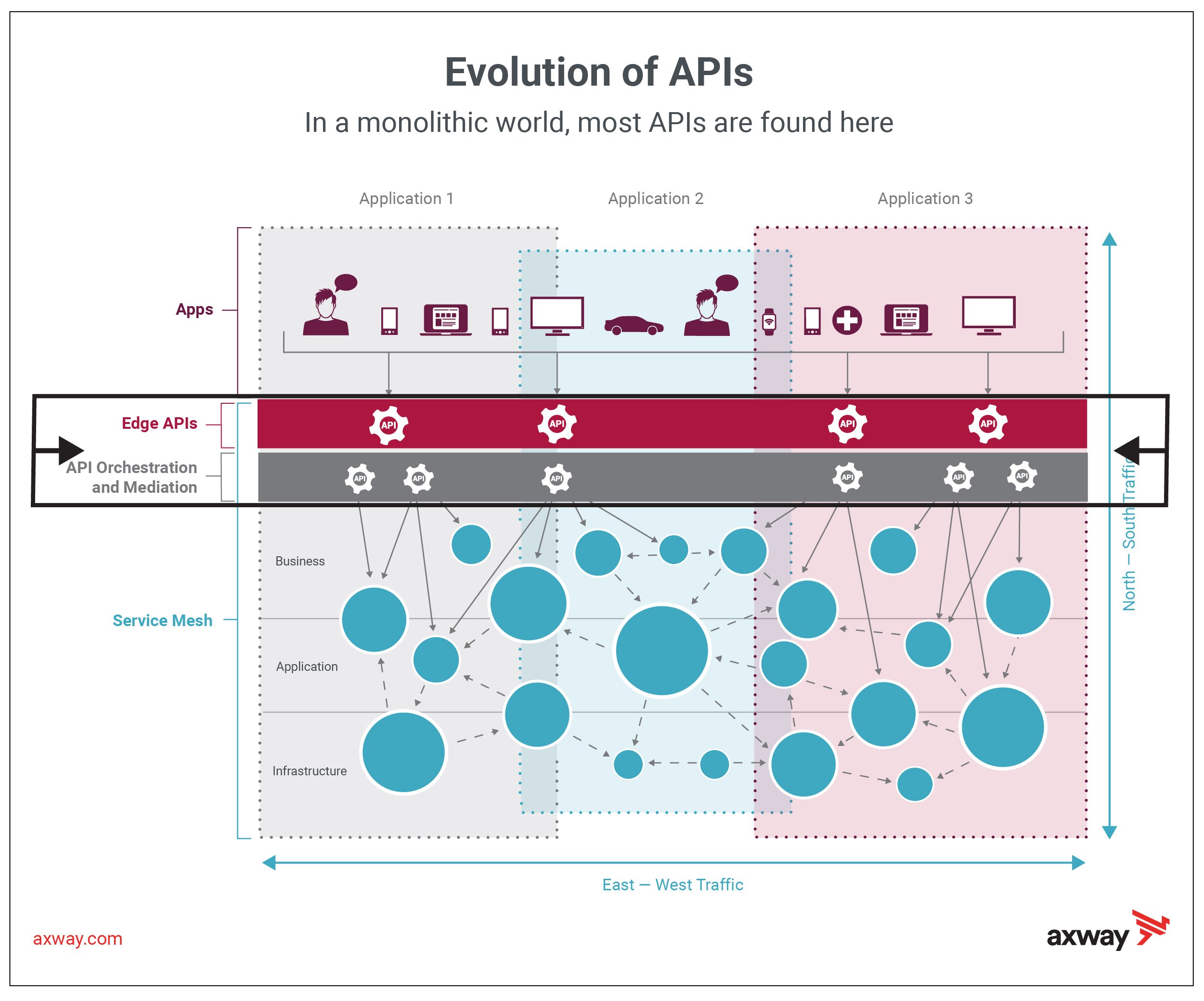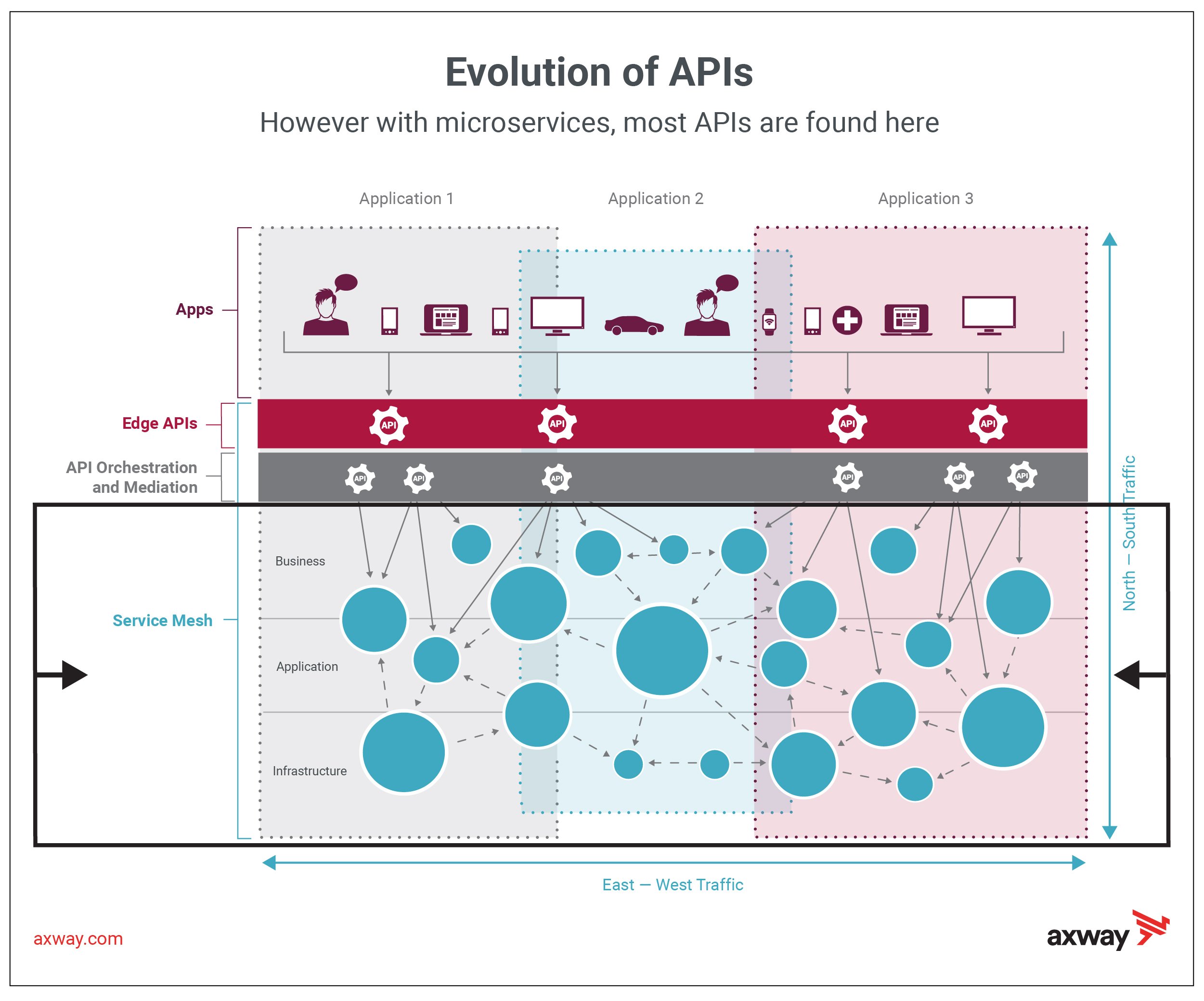Blog by Chris Lennon, SMPTE Standards Director and President and CEO of MediAnswers
As I explained in an earlier SMPTE blog, microservices break traditional processes into the smallest useful tasks. This approach affords media organizations benefits including increased agility, scalability, and flexibility, as well as cost and space savings.
While the previous blog touched on the fact that the replacement of a handful of large monolithic systems by hundreds or thousands of microservices does present some new challenges — namely in terms of interoperability — this topic is worth a closer look. Two graphics on the evolution of APIs illustrate why.

Figure 1 shows the model employed by most broadcasters over the past four decades. A few big applications rely on a small series of APIs to enable communications, supported by orchestration and mediation, with most of the work taking place in the latter areas. This model is straightforward, easy to understand, and easy to maintain. It’s not agile, but it’s comfortable.

Thank you to Axway who has offered their images to help communicate about this topic.
Figure 2 shows how microservices break the traditional model. APIs actually move into the service mesh area, and in this diagram they are represented by the arrows between different services. Suddenly, the need for interoperability grows well beyond implementing a few well-established APIs supporting a few well-known applications. For a large real-world media enterprise, it probably would be accurate to multiply those balls and arrows by 10 or even 100. In short, it’s chaos.
Fortunately, this is just the type of challenge that SMPTE is equipped to solve. Standardization, in particular, is especially effective in addressing this kind of big industry challenge. In fact, standardization is really the only way to take on the challenge of bringing interoperability to microservices.
Without standardization, users and vendors will be responsible for creating and maintaining dozens of proprietary interfaces between systems, no small task in the best of scenarios — and an immense undertaking in the midst of rapid business and technological change. In addition to adding time and expense to deployment, this approach introduces risk. Media organizations today understand the work it has taken to stitch systems together just to reach a static point, and they don’t want to get caught up in trying to maintain this new model using proprietary connections.
For both users and vendors, SMPTE is a logical source of help. The Society brings together media organizations, vendors, and platform providers and supplies a framework for working together to solve critical challenges.
Rather than try to solve every interoperability problem associated with microservices, SMPTE is working with organizations including the Open Services Alliance (OSA) to identify focus areas in which the Society can deliver results that make an impact and enable real progress.
Over the course of recent meetings, OSA has come up with three pilot projects that meet these criteria. The first project looks at standardized services for IMF, the interoperable master format. It’s a widely adopted format, and as of yet there aren’t any standardized services around it. The second project, proposed by a large media organization, is standardizing status reporting and logging coming back from microservices. This will be critical to monitoring and maintaining the performance of microservices. The third project looks at real-time control of devices from a services perspective, and it can build on work already begun to look at ways to simplify and standardize real-time control.
These projects are exciting because they give SMPTE a running start in helping to solve the interoperability challenges the industry is facing today. They provide direction and even a proposed solution, and the SMPTE committees can decide if that’s the right approach and, if so, polish it up and move it through the formal standards development process. The Society has the right people and organizational tools to look after design and documentation.
Going forward, standards for microservices will make it easy for media organizations to unplug certain parts of a solution and plug in other services as needed to adapt to continuous changes across their businesses, their technical operations and workflows, and the media industry as a whole.